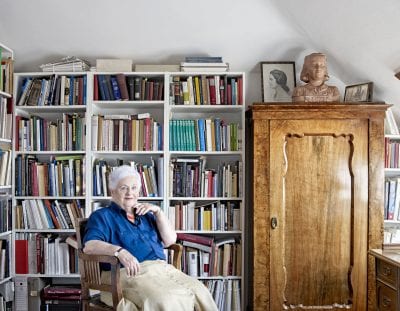
Zsuzsa Urbach, a distinguished scholar of Netherlandish art, an Honorary Member of HNA, and an invaluable colleague, died on 26 November in Budapest. Born in 1933 in an assimilated Jewish background and educated in the strictest Calvinist environment, it was not easy for Zsuzsa to face both Hungarian fascism and, later, communism. She studied art history and medieval archaeology at the Eötvös Loránd University in Budapest, where she received a doctorate in 1962. Already during her graduate work, Zsuzsa turned her attention to the topics of Christian iconography, seen by her generation of Eastern European scholars as a modest form of personal protest and resistance against the prevailing rules of Marxist ideology. She was preoccupied with iconography studies until the end of her professional career.
After 1957 Zsuzsa continued her studies at Munich’s Ludwig-Maximilian University and at London´s Courtauld Institute. After her return to Budapest, she spent a few years in the stimulating and liberal atmosphere of the Corvina Publishing House. Her serious professional career, however, began in the 1960s at the Museum of Fine Arts in Budapest, when she stepped into the position of Curator (from 1966) and later Chief Curator of the Department of Old Master´s Painting (until 1994).
In addition to iconography, Zsusza from the beginning focused also on Early Netherlandish and Early German painting. Her Ph.D. thesis on Visitation iconography was published in 1964, followed by the first short overview of Early Netherlandish paintings in Hungarian collections in 1971 (Early Netherlandish Painting: Museum of Fine Arts Budapest, Christian Museum Esztergom, Budapest 1971). Building her international reputation step by step as a specialist and connoisseur, she published papers devoted to Petrus Christus (1973), Gerard David (1987), Pieter Brueghel (1978, 1985), Hendrick de Clerck (1978), Juan de Flandes (2001), and other painters. Her studies appeared in the Niederdeutsche Beiträge zur Kunstgeschichte, the Antwerp Jaarboek Koninklijk Museum voor Schone Kunsten, and in the Annales d´Histoire de l´Art et d´Archéologie, just to name a few.
Importantly, Zsuzsa was among the first scholars in Eastern Europe who was able to recognize the importance of technical investigations of the 15th- and 16th-century Northern painting. She very early joined the initiative undertaken by Hélène Verougstraete and Roger Van Schoute and became a regular participant of the IRR colloquies organized by the Leuven and the Leuven-la Neuve University. Moreover, as an experienced editor, she contributed to the translation and editing of two seminal books on Netherlandish culture into Hungarian: Johan Huizinga’s The Waning of the Middle Ages (Budapest 1967) and Karl van Mander’s The Lives of the Illustrious Netherlandish and German Painters (Budapest 1987).
During her long curatorial career, Zsuzsa organized several successful exhibitions of Netherlandish paintings and sculptures. One good example is the 1990 exhibition held at the Museum of the Catharijnekonvent in Utrecht. In 1994 the catalogue of Early Netherlandish and Early German paintings of the Museum of Fine Art came out with Zsuzsa´s important entries (Museum of Fine Arts Budapest, Old Masters’ Gallery. Summary Catalogue, Vol. 2. Early Netherlandish, Dutch and Flemish Paintings. Ed. by Ildikó Ember and Zsuzsa Urbach, Budapest 2000).
In 1997, after teaching at the Eötvös Loránd University, the Art History Institute of the Budapest University, and then for a short period at the Central European University, Zsuzsa was invited to establish a new art history institute at the newly founded Péter Pázmány Catholic University. She successfully completed this task in 2004, and since then she taught several generations of young Hungarian adepts of art history. She has been unfailingly generous in her supervision, and her inspirational guidance gave her lectures cult status.
During her life, Zsuzsa was awarded the Pasteiner Prize, the Ipolyi Prize, and in 1999 the Lajos Fülep prize from the Soros Foundation. Also, she was a fellow at the IRPA/KIK in Brussels (1969), at CASVA in Washington (1984), and at the Villa I Tatti in Florence (1998). Finally, in 2015 Zsuzsa published her long-awaited scholarly catalogue of the Netherlandish painting of the Museum of Fine Arts in Budapest, the result of her lifelong research (London and Turnhout 2015). That impressive, two-volume book, written in collaboration with Ágota Varga and Andás Fay, was well received and positively reviewed.
It is worth noting that Zsuzsa was not only an excellent scholar and inspiring teacher, but also a good colleague. She was generous in sharing her vast knowledge, and captivating with her personal wit and deep passion for fine arts.
Ingrid Ciulisová
Slovak Academy of Sciences (Institute of Art History)